Mount Tai
Mount Tai, also known as Daishan, Daizhong, Daiyue, Dongyue, Taiyue, is located in the central part of Shandong Province, belonging to Tai'an City, stretching between Tai'an, Jinan, Zibo, with a total area of 24,200 hectares. The Jade Emperor's summit is 1545 meters above sea level, with magnificent momentum. It is known as "the head of the five mountains", "the head of the five mountains", "the long of the five mountains", "the honour of the five mountains" and "the first mountain in the world". It is a world natural and cultural heritage, a world geological park, a national AAAAA class tourist attraction, a national scenic spot, a national key cultural relic protection unit, and a national civilized scenic spot.
Mount Tai was regarded by the ancients as a "direct throne" of heaven, become a popular worship, the emperor of the sacrificial mountain, there is a "Mount Tai, all seas are safe" view. From the beginning of the Qin Dynasty to the Qing Dynasty, 13 emperors visited Mount Taishan for Buddhism or sacrifice, and another 24 emperors sent officials to sacrifice 72 times.
More than 20 ancient buildings and more than 2200 stone inscriptions were left on the grand mountain of Taishan. Taoism and Buddhism regard Mount Tai as "the Buddha Kingdom of Mount Fairy", deify Mount Tai, and build a large number of temples and temples in Mount Tai.
Mount Tai is the symbol of the Chinese nation, the epitome of the Oriental culture, the place where the thought of "harmony between man and nature" rests, and the home of the Chinese national spirit.
Mount Tai runs through the central part of Shandong Province, within the boundaries of Tai'an, stretching between Tai'an, Jinan and Laiwu. It was called "Daishan" and "Daizhong" in ancient times, and was renamed "Mount Tai" in the Spring and Autumn Period. Taishan's former Confucius's hometown is Qufu, and it's back to Quancheng Ji'nan. Mount Taishan rises to the east of the North China Plain and is above the Qilu Plain. It faces the sea in the East and the Yellow River in the west. In the south, there are water of Wen, Si and Huai. It is about 200 kilometers long in the East and west, 50 kilometers wide in the north and the south. The main vein and branch vein involve more than ten counties around it. The area lying on the wall is 426 square kilometers, and the elevation of the main peak is 1545 meters.
Geological characteristics
The geological structure of Taishan is very complicated, mainly by fracture, and its structural feature is fault block uplift. There are both Precambrian structures and Mesozoic Cenozoic structures.
The pre-Cambrian geological structure of Mount Taishan is characterized by multi-stage folds, faults and ductile shear zones. They superimpose and transform each other, forming extremely complex structural features. The study of their genetic mechanism is one of the important contents of Precambrian geology. In addition, the barrel structure, which is rare at home and abroad, developed from Mesoproterozoic diabase porphyrite, is of great scientific value.
From the regional tectonic point of view, the strong subduction of the Pacific Plate to the Eurasian Plate in the east-west direction caused the strong tilting of the NE-trending Taiqian fault in the Taishan area under the action of the N-S trending extension, and the large-scale uplift of the Taishan Mountains, which resulted in the widespread and strong neotectonic movement of the Taishan Mountains. And the landform pattern plays a dominant controlling role. The gravity gliding structure formed on the unconformity surface of the Lower Paleozoic and Precambrian crystalline basement around Mount Taishan is also closely related to neotectonic movement.
Mount Taishan is the highest mountain range in the hills of Shandong Province. The stratum is typical basement and caprock structure area of North China Platform. In the south, the rising amplitude is large, and the caprock is weathered away, revealing a large basement-Mount Taishan complex, that is, the stratum of the Archaeozoic Mount Taishan Group. Its absolute age is about 2.5 billion years, which is one of the oldest strata in China. The northern rise is small, and the cap rocks retain typical Paleozoic strata developed on the North China platform. Taishan landform is divided into four types: Alluvial-diluvial platform, Denudation-Accumulation hills, structural denudation-low mountains and erosion-structure-medium-low mountains. In spatial image, from low to high, resulting in the towering trend of overlapping peaks, soaring, forming a variety of landform groups combination landscape.
Taishan, also known as Daishan, Dai Zong, Daiyue, Dongyue and Tai Yue. In ancient times, it was called volcano and Taishan. Da was found in oracle bone inscriptions and bronze inscriptions. It was pronounced Tai. And "Tai Shan" means "big mountain". "Parallel Elegance Codification. Explanatory Name": "Ancient Tai characters do not add point, such as Daji, Dachu, big room, temple, University and so on, later people add point to different size, then divided into two. According to the traditional reading of ancient characters, "Da" also has three tones: "Da", "Tai" and "Dai". During the Spring and Autumn Period and the Warring States Period, due to the extension of homonyms and the evolution of synonyms, "Tai" and "Tai", "Dai" and "Dai", "Dai" and "Yue" were also mutually adaptable. Thus, special names such as "Tai Shan", "Dai Shan", "Dai Zong" and "Dai Yue" appeared successively. The name "Taishan" was first seen in the Book of Songs. "Tai" means great, smooth and peaceful. Yi says hexagram, "go to Thailand, then peace". The word "Tai" has the original tall and smooth meaning extended to "big and stable, stable and safe". Immediately after that, there were "steady mountains", "great peace and good fortune" and "great mountain hair".
The five mountains are the mountains, and Taishan is the longest of the five mountains. Wuyue is the general name of the five famous mountains in China. It generally refers to Mount Tai in the East (located in Shandong), Mount Huashan in the West (located in Shaanxi), Mount Heng in the South (located in Hunan), Mount Heng in the North (located in Shanxi) and Mount Songshan in the middle (located in Henan). Because of its great momentum, Taishan also has the reputation of "the first famous mountain in the world". Mount Taishan has long been an important birthplace of Oriental culture since ancient times. The remains of the Neo-Tai people 50,000 years ago and those of Yiyuan people 400,000 years ago show the early human activities in this area. The Dawenkou culture in the southern foot of Mount Tai and the Longshan cultural relics in the northern foot also reflect the activities of clan tribes in the early Yellow River valley. During the Warring States Period, Qi built a 500-kilometer-long Great Wall along the Taishan Mountains to the Yellow Sea. After entering the Qin and Han Dynasties, Taishan gradually became a symbol of political power. The actual altitude of Taishan is not too high, only third place in the five mountains, next to Huashan and Mt. Hengshan. But in terms of historical, political and cultural status, many of the country's mountains can not be compared with it.
The ancients described "Taishan swallowing Xihua, pressing South Heng, driving Zhong song, Yi Bei Heng, as the length of the five mountains". In ancient Chinese myths and legends, after the death of Pangu, the head turned into Taishan. According to "Shiji Jijie" contained: "the sky is too high to reach, in Mount Tai set up a Zen and offered sacrifices, hope near the gods also. Ancient traditional culture holds that the East is the place where everything alternates and the early spring takes place, so Mount Tai has the reputation of "the long of the five mountains" and "the sole respect of the five mountains". Since ancient times, the Chinese have worshipped Taishan. They have the saying that "Taishan is safe and the four seas are all peaceful". In ancient times, various dynasties used to offer sacrifices and sacrifices in Taishan, and built up temples and inscriptions in Taishan. In ancient times, the literati and elegant people were ready to admire Taishan. More than 20 ancient buildings and more than 2200 stone inscriptions were left on the grand mountain of Taishan.
Mount Tai rises to the east of the North China Plain, overwhelming the Qilu Plain, facing the vast sea in the east, the Yellow River in the West with a long history, and the water of Wen, Si and Huai in the south. The relative height difference between Mount Tai and the plain and the hills is 1,300 meters, which forms a strong contrast. Therefore, Mount Tai has a very high sense of rhythm and the height of "small mountains at a glance". The mountain ranges stretch over 100 kilometers and lie coiled 426 square kilometers. Its broad foundation produces a sense of stability, while its large and concentrated form produces a sense of gravity, which has a great prestige of "keeping calm but not shaking". The so-called "stable as Mount Tai" and "heavy as Mount Tai" are precisely the reflection of their natural characteristics in people's physiology and psychology. In the Six Dynasties, Ren Fang's Shuyiji recorded that in the Qin and Han Dynasties, the folklore of Pangu (the God and man who created heaven and earth in ancient times and gave birth to all things) was Dongyue after his death, Nanyue in his left arm, Beiyue in his right arm and Xiyue in his foot. The head of Pangu turned East, and turned into Dongyue. Taishan became the first of the five mountains. This is obviously based on the "Five Elements" and "Five Virtues" theory of mythological stories, reflecting the historical background of Mount Tai's sole respect for the Five Mountains.
Taishan is closely linked to the mountain city of Tai'an, and Tai'an city is located at the south foot of Taishan. Taishan is in the north direction of Tai'an city. It is clear that the jade peak of Taishan's main peak is clearly visible. There are four official entrance tickets to Mount Taishan: Hongmen Palace entrance, Tianwai Village (Tiandi Square) entrance, Taohua Valley entrance, Tianzhufeng entrance.
Cultural background
Because the East is the source of life, the symbol of hope and auspiciousness. Ancient Chinese ancestors often regarded the magnificent and peculiar Dongyue as a god, and worshipped the mountain god as the object of praying for good weather. Thus, Mount Tai, located in the east, became the "auspicious mountain" and "the house of gods". The emperor of heaven, who was fatality, regarded Taishan as a symbol of national unity and power. In order to acknowledge the grace of heaven's "giving orders", we must also give sacrifices to gods in Taishan.
According to legend, in ancient times, Huang Di once boarded Taishan, and Shun emperor once visited Taishan. During the Shang and Zhou Dynasties, Shang King Xiangtu built the Eastern Capital at the foot of Mount Tai, and Zhou Tianzi built Qilu with Mount Tai as the boundary. Legend has it that before the Qin and Han Dynasties, 72 generations of emperors went to Mount Taishan to fend the gods. Since then, Qin Shihuang (219 years ago), Qin II, Han Wudi (110 years ago, 109 years ago, 106 years ago, 104 years ago, 103 years ago, 98 years ago, 93 years ago, 89 years ago) Emperor Guangwu of Han Dynasty (56 years), Emperor Zhang of Han Dynasty (85 years), Emperor Andi of Han Dynasty (124 years), Emperor Wen of Sui Dynasty (595 years), Emperor Gaozong of Tang Dynasty (666 years), Emperor Wu Zetian, Emperor Xuanzong of Tang Dynasty (725 years), Emperor Zhenzong of Song Dynasty (1008 years), Emperor Kangxi of Qing Dynasty, Emperor Qianlong and other ancient emperors successive From Qin Han to Ming and Qing Dynasties, emperors of various dynasties came to Taishan for 27 times. The emperors of the past dynasties consolidated their rule with the help of the divine power of Mount Tai, which elevated the sacred status of Mount Tai to an unprecedented degree.
The emperor's feudal activities and magnificent scenery left thousands of poetry and inscriptions on Mount Taishan. For example, Confucius's Qiu Ling Ge, Sima Xiangru's Feng Zen Shu, Cao Zhi's Fei Long Pian, Li Bai's Taishan Yin, Du Fu's Wangyue and other poems and essays have become famous works handed down from generation to generation in China; Song Dynasty murals in Tianyi Temple, and Luohan statues in Lingyan Temple are rare treasures; Taishan's stone carvings and tablets, which concentrate Chinese calligraphy Dacheng of the art of law, the real grass and seal are complete, Yan Liuouzhao each school to the end, is the Chinese calligraphy and stone art museum. Mount Taishan is rich in cultural heritage. There are 97 ancient ruins and 22 ancient buildings, which provide important material materials for the study of Chinese ancient architectural history.
Taishan is one of the birthplaces of ancient culture in the the Yellow River valley. The Dawenkou culture in the southern foot of Mount Tai and the Longshan cultural relics in the northern foot of Mount Tai have long been developed by human beings. There were 50 thousand fossils of Xintai fossils and 400 thousand remains of Yiyuan fossils. During the Warring States period, 500 kilometers of the Great Wall was built along the Taishan mountains to the Yellow Sea. Mount Tai and Confucius activities related to the scenic spots are Confucius visited Chufang, Wangwu Sheng Jifang, Confucius under the small world, Confucius Temple, Zhanlutai, Tiger Trench and so on. Taishan has the reputation of "the first of five mountains" and "the five mountains". It is a symbol of power and a sacred mountain.
Taishan has a long history of Buddhism, and Buddhism was introduced into Taishan in the middle of fourth Century. After two years (351 years), Zhao Yongning, a senior monk, first established Lang Gong temple and Ling Yan temple in Dai Yin, Taishan. During the Wei, Jin and southern and Northern Dynasties, the larger monasteries in Taishan were Valley Temple, jade emperor temple, Shenbao temple and Pu Zhao Temple. The famous Taishan Jingshi Valley is a Buddhist Classic Jingang Scripture carved by the Northern Qi people. In the Tang and Song Dynasties, Lingyan Temple was extremely prosperous. Li Jifu, the Prime Minister of the Tang Dynasty, called Lingyan Temple one of the "four wonders" in the world. As early as the Warring States Period, Taoism in Mount Taishan had Fangzi secluded in Daiyin cave; after Qin and Han Dynasties, there were many Ci temples, such as Wang Muchi (Qunwang Temple), Lao Juntang, Dou Mu Palace (Longquan View), Bixia Temple, Houshiwu Temple, Yuan Shitian Zun Temple and so on. Among them, Wang Muchi was the earliest, founded 25 years before the Eastern Han Dynasty, and Bixia Temple had the greatest influence. Taishan is the birthplace of myths and legends of the queen mother. As early as the Wei and Jin Dynasties, there was a view of Wang Mu Chi Taoist temple. Wang Mu Chi is located at the east end of the ring road in the south of Taishan. Cao Zhi of the Three Kingdoms has a poem of "crossing the king's mother's land in the East". In his poem "Deng Yue", poet Wang Xinjian also has a good swim, a clear breeze, and a whistling Daishan. Han Bo Yi Chao Hua, Qin song do not smoke. The sea of clouds washed away the dust, and the sky was fading. This is the best place to visit. Praise the poem.
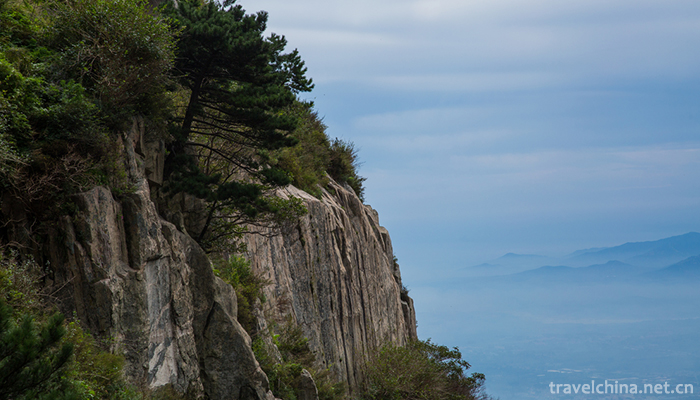
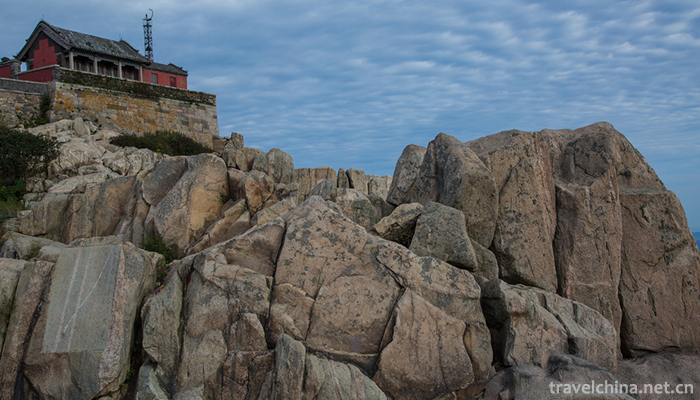
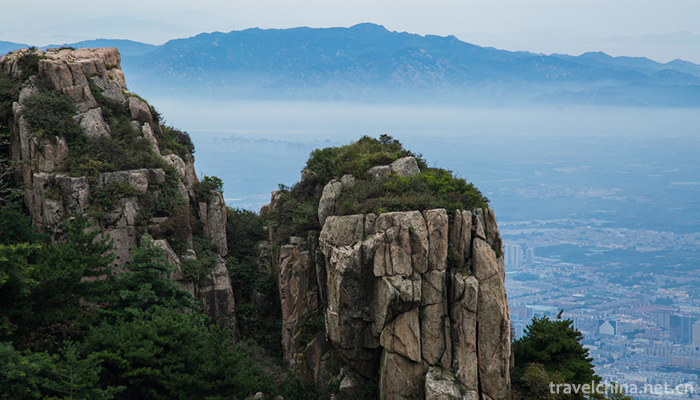

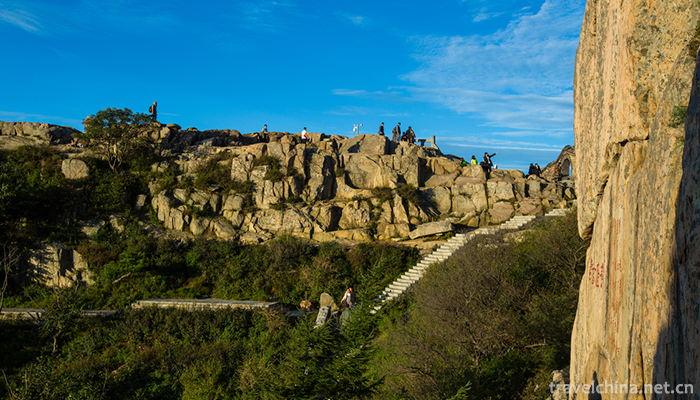
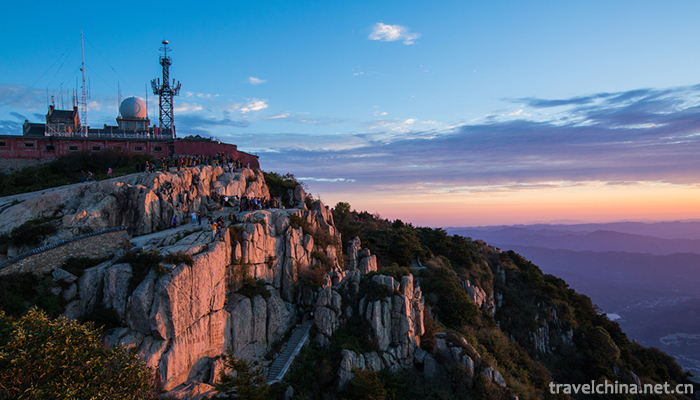

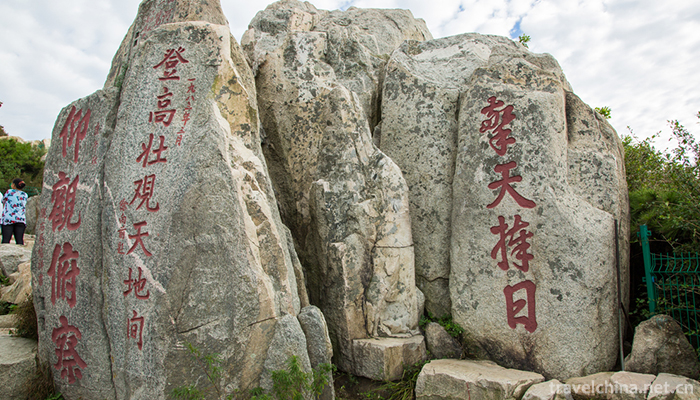
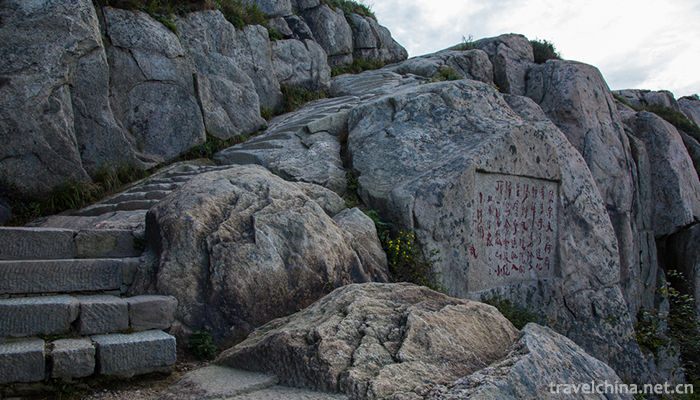
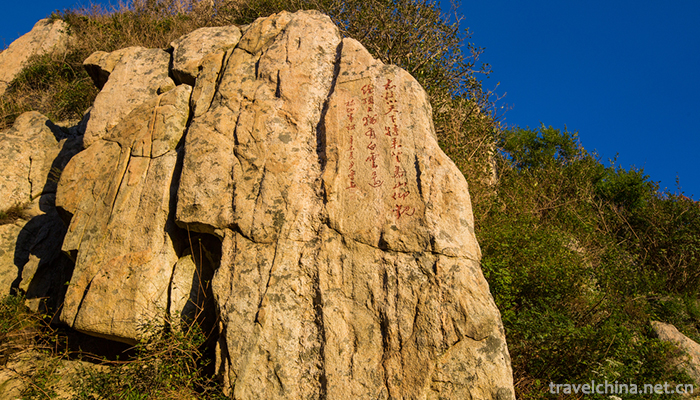

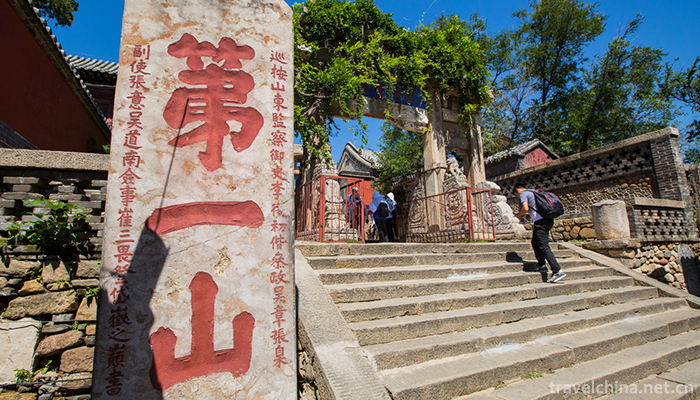



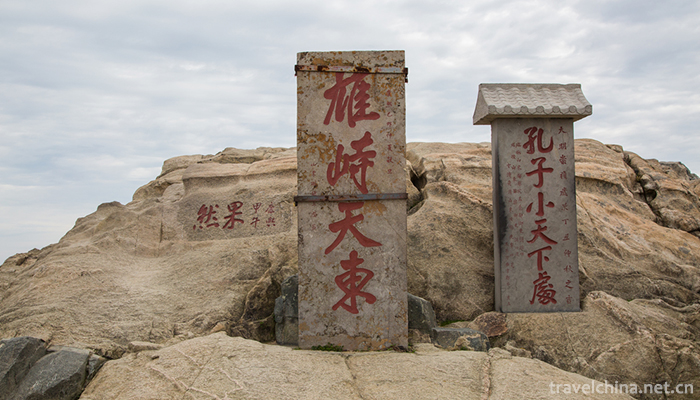
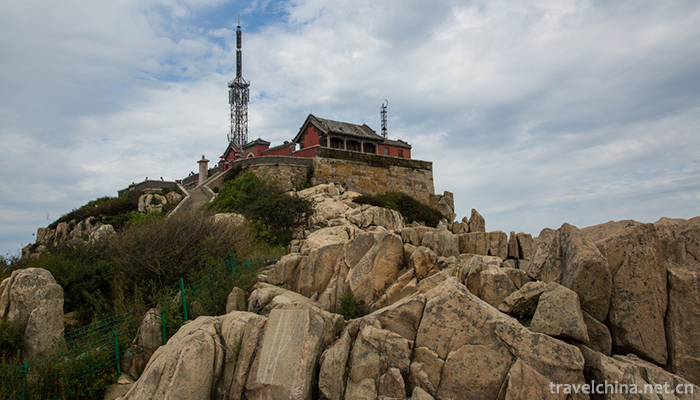
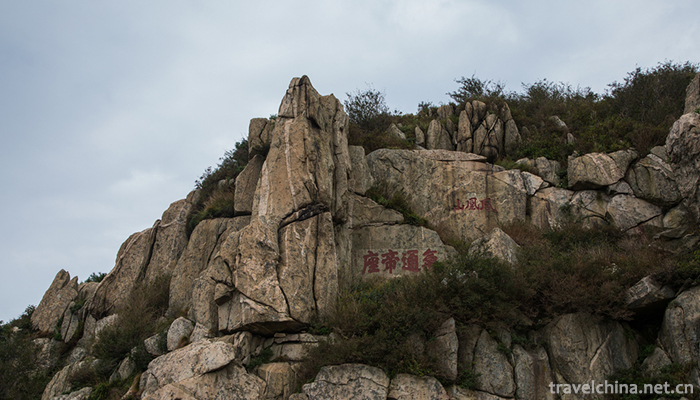
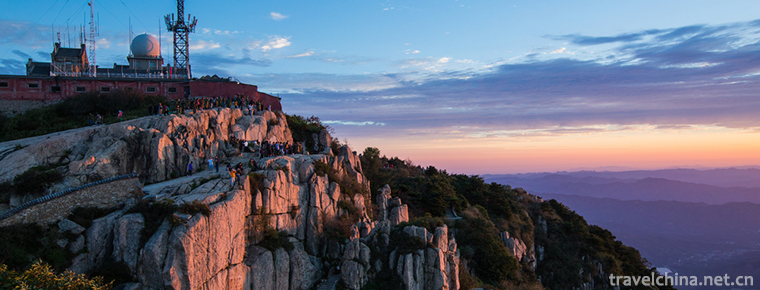
-
2.Noodles with quickfried eel shreds and shelled shrimps
Shrimp fried eel noodles is a famous traditional food in Kui yuan hall, Hangzhou City, Zhejiang province. When the shrimp is cooked with fried eel noodles, select the strong fresh eel,
Time 2018-10-27 -
3.Ming Yue Mountain
Mingyue Mountain Tourist Area of Yichun City, Jiangxi Province, is located 15 kilometers southwest of Yichun Central City, with an area of 104 square kilometers.
Time 2019-02-07 -
4.Bouyei Pange
Bouyei Pange is a traditional folk song of the Bouyei nationality. It is a folk literary work created and sung in the original Bouyei language. Bouyei Pange is popular in Buyi villages
Time 2019-04-04 -
5.Peacock Dance of Dai Nationality
Dai peacock dance is the most famous traditional performing dance in Dai folk dance in China. It is spread in Ruili, Luxi, Xishuangbanna, Mengding, Mengda, Jinggu, Cangyuan
Time 2019-04-24 -
6.Wool Textile and Rolling Techniques
Flower felt is the most popular among all ethnic handicrafts in Xinjiang, and it has a long history. Felt caps from the 1st to 3rd centuries A.D. are among the cultural relics unearthed at Lop Nur Lou
Time 2019-05-25 -
7.Lisu Folk Songs
Lisu people advocate singing in tune. In the multi-voice unaccompanied chorus of Lisu people, the three major tunes of Lisu folk songs are "swing time", "excellent leaf" and "
Time 2019-06-17 -
8.Xuzhou Qinshu
Xuzhou Qinshu is a kind of opera recognized by Xuzhou local people in Jiangsu Province. Spread in Xuzhou. At first, it was a recreational activity of "playful friends" in the leisure time of
Time 2019-07-09 -
9.Chen Jingrun
Chen Jingrun (May 22, 1933 -1996 March 19th), male, Han, non party personages. Fujian Fuzhou Man, a contemporary mathematician.
Time 2019-09-07 -
10.Climate of Nanchong
Nanchong belongs to the subtropical humid monsoon climate. Compared with the Yangtze River Valley in the south of the basin, the temperature is relatively low, the rainy season is longer and the rainstorm is more. Compared with the Western Sichuan plain
Time 2020-12-17 -
11.Nanchong Education
By the end of 2019, there were 271 primary schools in Nanchong, with 57000 students enrolled and 356700 students in school. The enrollment rate of primary school-age children was 100%. There are 427 junior high schools with 62900 students and 185300 students in school.
Time 2020-12-17 -
12.Meishan administrative division
Meishan City has 6 county-level administrative divisions (Municipal District 2, county 4), and 80 township level administrative divisions (street 13, town 62, township 5). It covers an area of 7134 square kilometers and has a population of 3.5 million. Meishan Municipal People's Government in Dongpo District Meizhou Avenue West Section 2.
Time 2020-12-18